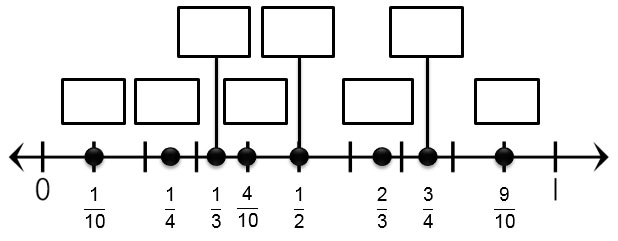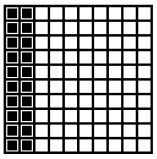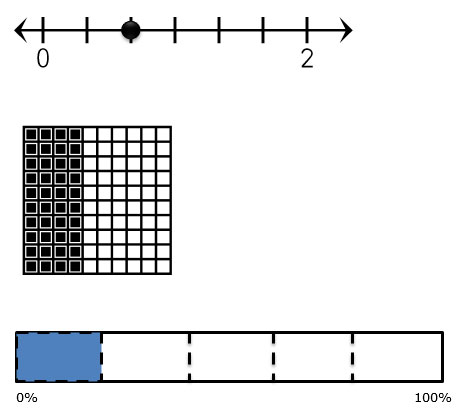
In previous grades, you used benchmark fractions to estimate sums and differences of two fractions. Benchmark fractions, such as 1 over 4 1 4 , 1 over 2 1 2 , or 3 over 4 3 4 , are useful when you want to estimate the relative size of a fractional quantity.
The number line below shows the location of three commonly used benchmark fractions, 1 over 4 1 4 , 1 over 2 1 2 , and 3 over 4 3 4 .

In this section, you will apply what you learned in the previous section to create benchmark percents from common benchmark fractions.
Digital music and movie players use a progress bar, which is a form of a percent bar or strip diagram, to indicate how much of a song or movie has played. For music, the length of the bar corresponds to the length, in minutes and seconds, of a particular song. For movies, the length of the bar corresponds to the length, in either minutes and seconds or hours and minutes, of a particular movie.
For example, the picture below shows how much of a song, Deep in the Heart of Texas, has played so far.

Interactive popup. Assistance may be required.
1 over 2 1 2
Interactive popup. Assistance may be required.
50%
![]() In the interactive below, several partially-played songs are shown. Use the information in the progress bar to identify a benchmark fraction represented by the amount of the song that has already played. You may not use all of the fractions, or you may use some fractions more than once. Remember that there are 60 seconds in 1 minute.
In the interactive below, several partially-played songs are shown. Use the information in the progress bar to identify a benchmark fraction represented by the amount of the song that has already played. You may not use all of the fractions, or you may use some fractions more than once. Remember that there are 60 seconds in 1 minute.
Use the benchmark fractions for each song to determine the percent of each song that has already played.
Interactive popup. Assistance may be required.
25%
Interactive popup. Assistance may be required.
10%
Interactive popup. Assistance may be required.
331 over 3 1 3 %
Interactive popup. Assistance may be required.
75%
Interactive popup. Assistance may be required.
40%
Interactive popup. Assistance may be required.
662 over 3 2 3 %
Complete the number line below to match benchmark percents with benchmark fractions.

If you know the benchmark percents for 1%, 10%, 25%, 331 over 3 1 3 %, or 50% on a particular model, how could you determine the benchmark percents for multiples of these?
For questions 1 – 3, identify the benchmark percent represented by each model shown below.

Interactive popup. Assistance may be required.
Into how many parts is 100% broken? How much does each shaded part represent?

Interactive popup. Assistance may be required.
If 100% is 1 whole unit, what percent is 3 whole units? Into how many equal parts is the space on the number line between 3 and 4 broken?

Interactive popup. Assistance may be required.
How many parts does the 10 by 10 grid contain? How many parts are shaded?

